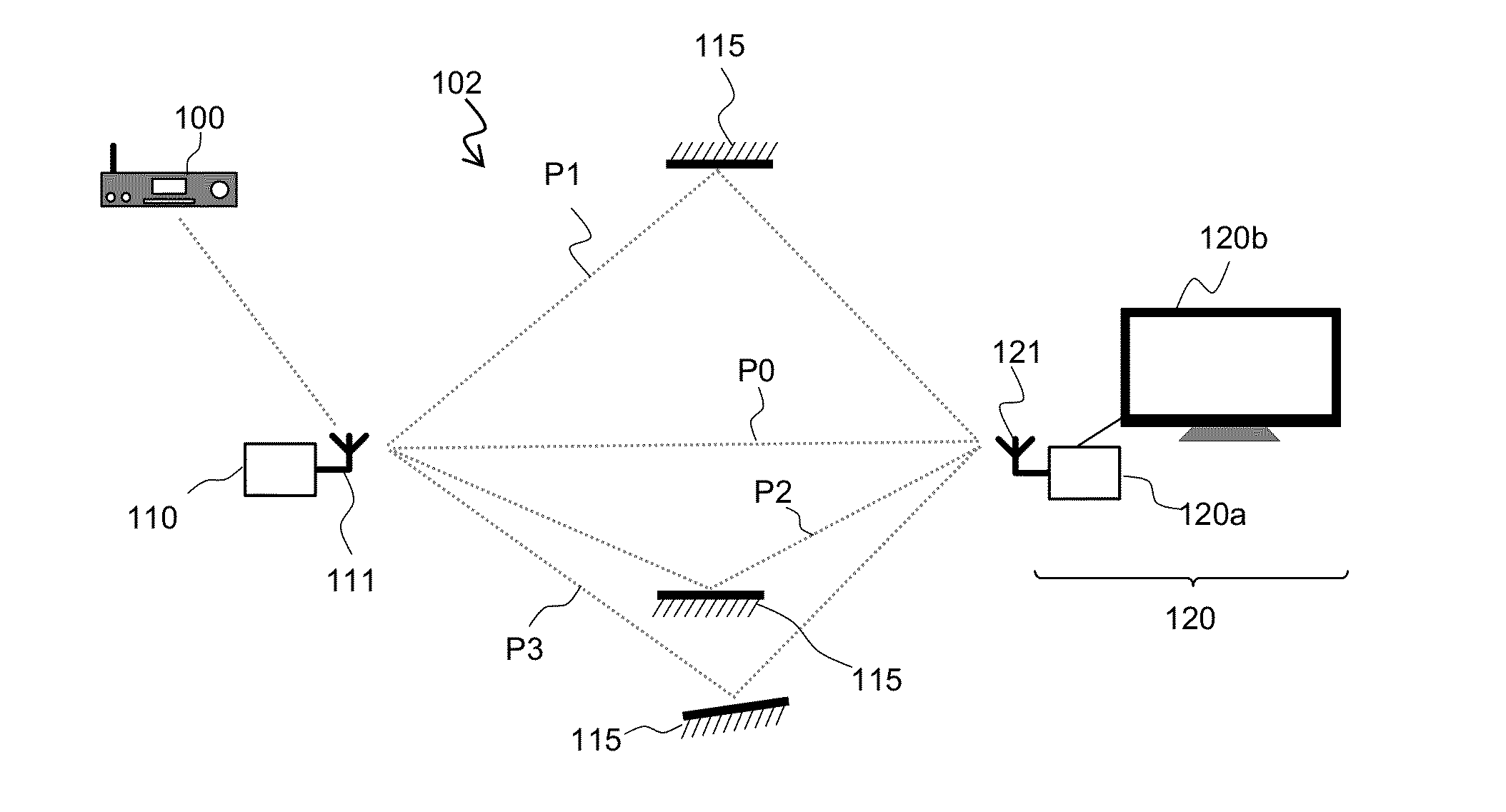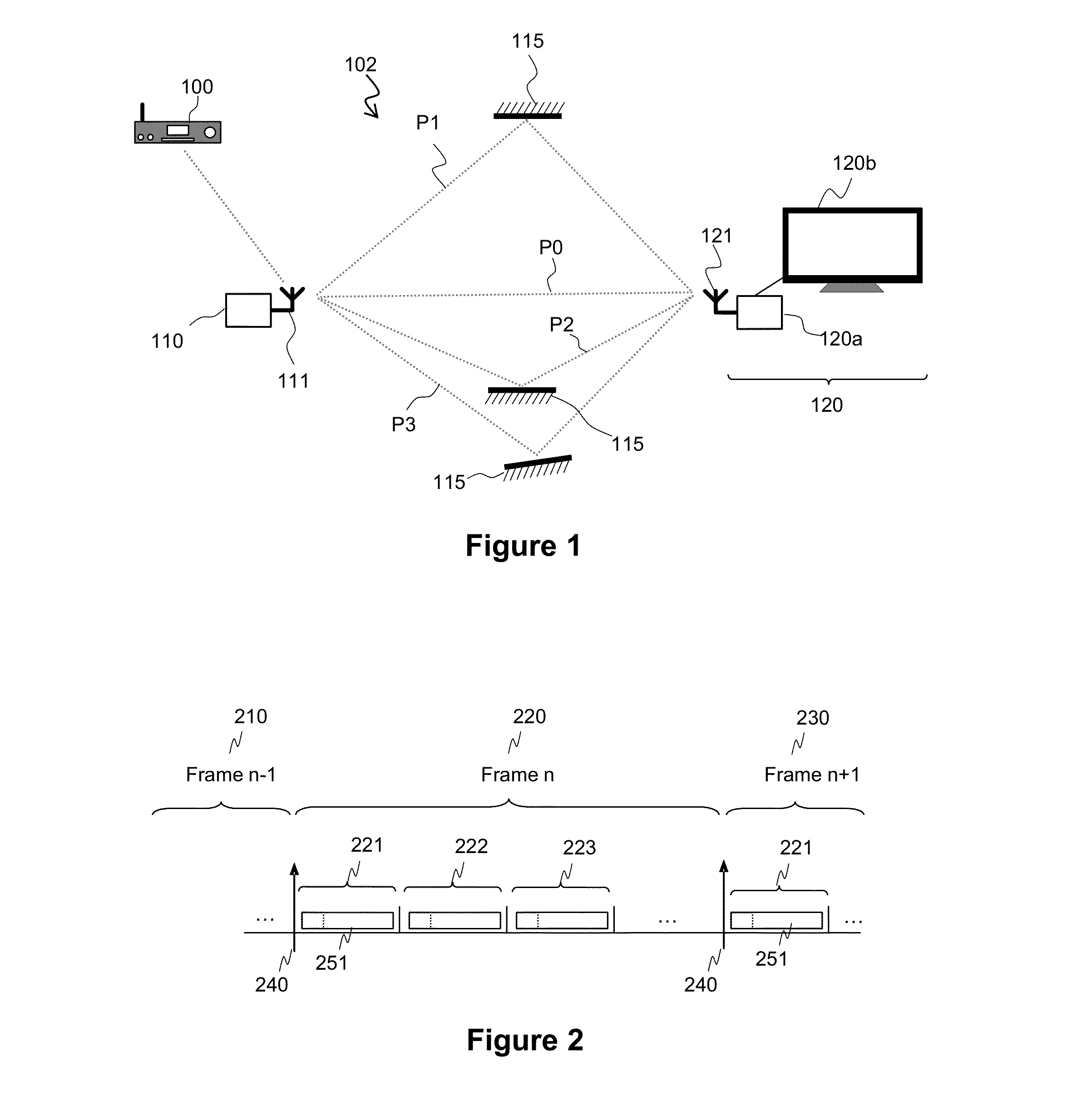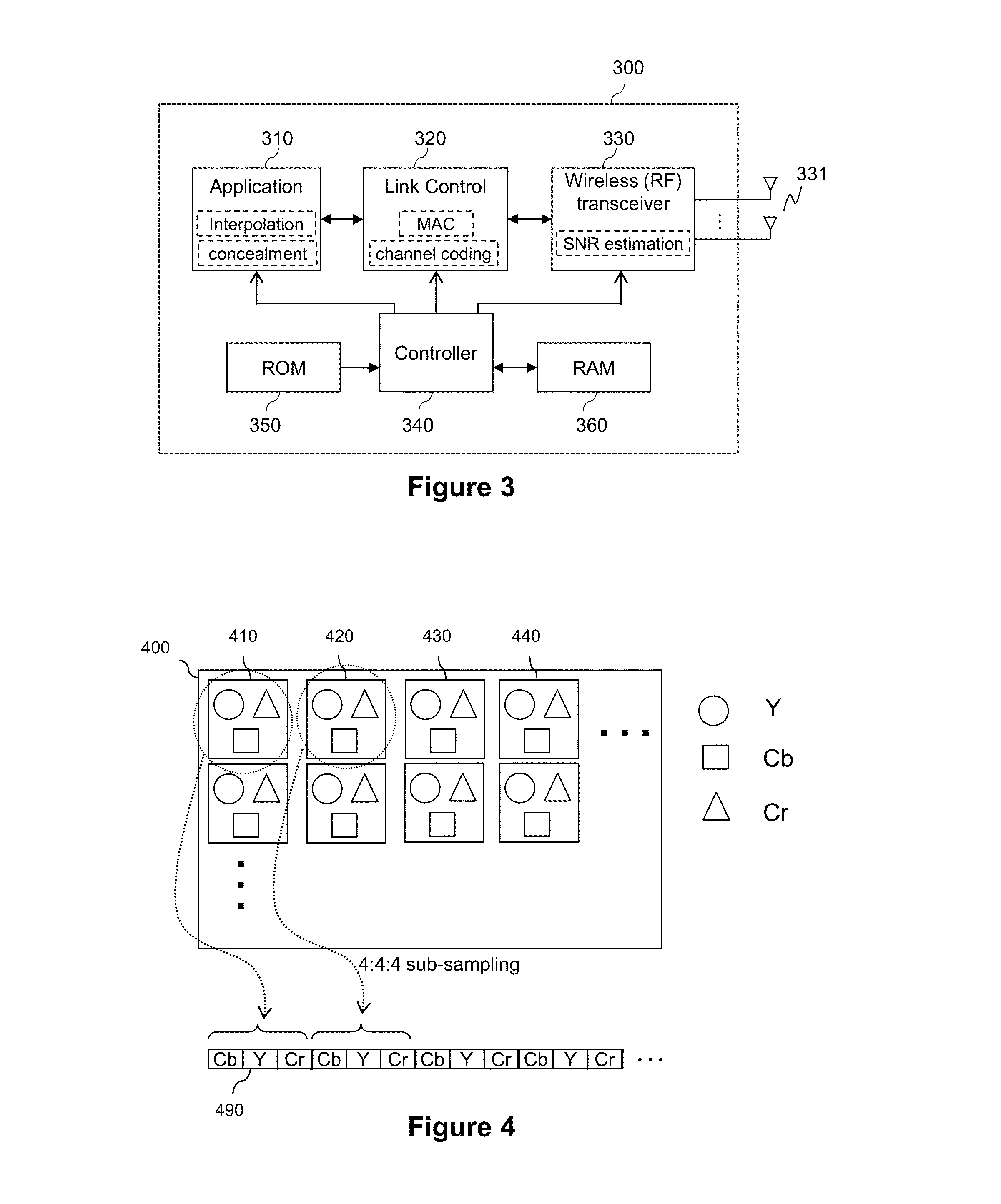Communication of data blocks over a communication system
a communication system and data block technology, applied in the field of data communication, can solve the problems of high bandwidth, unattainable data rate in current 802.11 system, and high cost of uncompressed hd video data transport, and achieve the effects of reducing or eliminating residual errors, and optimizing bandwidth us
- Summary
- Abstract
- Description
- Claims
- Application Information
AI Technical Summary
Benefits of technology
Problems solved by technology
Method used
Image
Examples
first embodiment
[0106]In this embodiment we consider a primary data stream formed by sub-sampling uncompressed video frames according to 4:2:2 sub-sampling scheme as depicted in FIG. 5. Pixel components are assumed to be coded with 8 bits and each data block of the primary stream corresponds to one component (N=8 bits). It is furthermore assumed that M=2, which means that the M most significant symbols in this embodiment correspond to the two most significant bits (MSB) of the 8 bits data block.
[0107]FIG. 9a illustrates a global flowchart for transmitting data blocks according to the first embodiment of the invention and implemented by first device 110.
[0108]This global flowchart comprises a first main step S91a for forming the primary and secondary data streams. The details of this step are provided with reference to FIG. 10.
[0109]The flowchart further comprises a second main step S92a for transmitting the primary and the secondary data streams in accordance with first and second transmission para...
second embodiment
[0130]This second embodiment is similar to the first embodiment, except that the transmission / reception parameters used for transmitting and receiving the primary and secondary data streams are different. In the first embodiment, same data modulation (transceiver) parameters (16 QAM modulation scheme) and different data encoding (link control) parameters (coding rates of 1 / 3 and 2 / 3) are used for the primary and secondary data streams. In this second embodiment, same data encoding parameters (coding rate of 2 / 3) and different data modulation parameters (16 QAM modulation scheme and 4 QAM modulation scheme) are used for the primary and secondary data streams. These are two alternative ways of increasing robustness of one data stream relatively to the other. Equivalent result in terms of robustness can also be obtained in alternate embodiments by varying both the link control parameters and the transceiver parameters.
[0131]Figures for forming and recovering the primary and secondary d...
third embodiment
[0136]In this embodiment we consider a primary data stream formed by a 4:4:4 uncompressed video frames as depicted in FIG. 4. Pixel components are assumed to be coded with 8 bits and each data block of the primary stream corresponds to the 3 pixel components (24 bits). One symbol is taken equal to one byte, and thus N=3 symbols. It is furthermore assumed that M=1 symbol, which means that the most significant symbol (MSS) in this embodiment correspond to the most significant byte of the 3 bytes of the data block. Only the main figures that differ from the previous embodiments are described herebelow.
[0137]FIG. 16 illustrates the flowchart for forming the primary and secondary data streams according to the third embodiment of the invention.
[0138]At step S160, the primary data stream is obtained by packetizing video frames according to 4:4:4 sub-sampling. The resulting data stream is for example the arrangement of pixel components 490 illustrated in FIG. 4.
[0139]At step S161, primary d...
PUM
 Login to View More
Login to View More Abstract
Description
Claims
Application Information
 Login to View More
Login to View More - R&D
- Intellectual Property
- Life Sciences
- Materials
- Tech Scout
- Unparalleled Data Quality
- Higher Quality Content
- 60% Fewer Hallucinations
Browse by: Latest US Patents, China's latest patents, Technical Efficacy Thesaurus, Application Domain, Technology Topic, Popular Technical Reports.
© 2025 PatSnap. All rights reserved.Legal|Privacy policy|Modern Slavery Act Transparency Statement|Sitemap|About US| Contact US: help@patsnap.com



